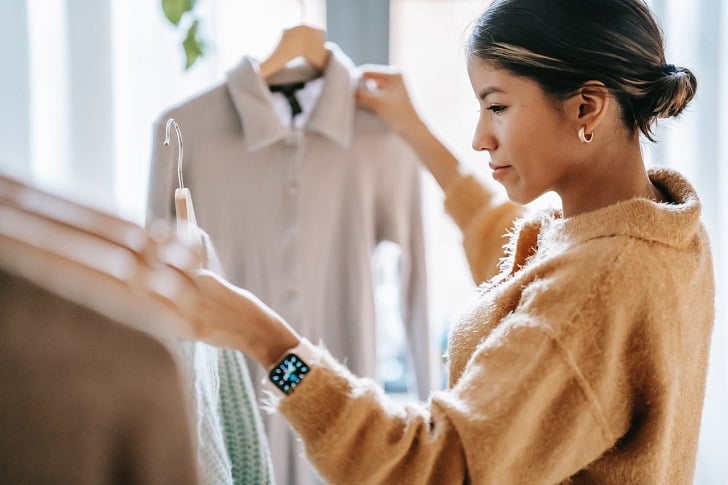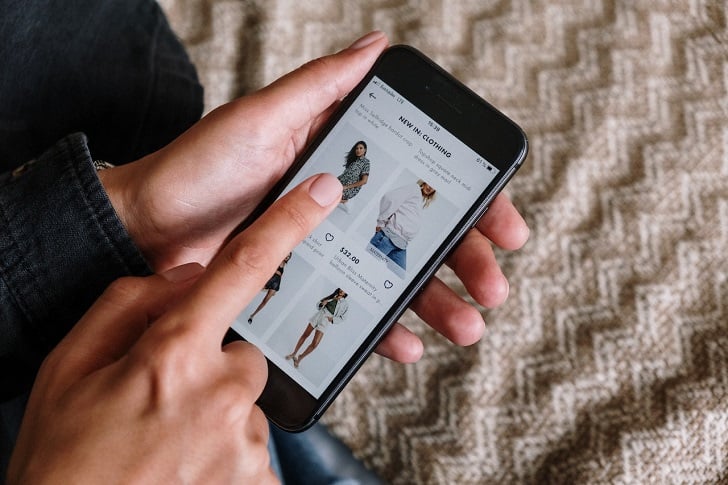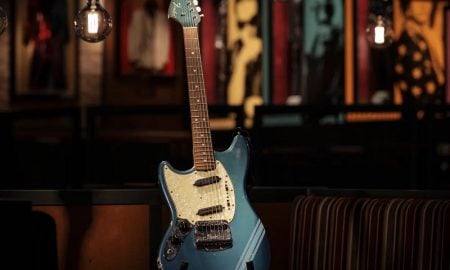
Is America Obsessed With Shopping?

In the wake of the pandemic, Americans have unleashed a shopping spree like never before. The geopolitical tides have shifted, and as a result, the nation’s buying habits are in overdrive.
While the service sector still maintains its dominance in the economy, it’s hard to ignore the surge in goods spending that’s been sending the cash registers ringing. Let’s dive into why Americans can’t resist the allure of shopping carts and digital checkout buttons.
The Experience Economy Takes a Backseat
Remember those carefree days when you could indulge in concerts, theatre shows, and weekend getaways? The pandemic bulldozed the experience economy, leaving people with limited avenues for spending on services. The closure of entertainment venues, travel restrictions, and prolonged lockdowns meant there was little to splurge on other than goods.

Liza Summer/ Pexels | With limited experiential opportunities, Americans diverted their spending power toward durable goods
According to Bank of America Research, traditional entertainment spending plummeted by a staggering 90% year-over-year in the early months of the pandemic. With no experiential options, Americans redirected their spending towards durable goods.
As the world cautiously reopens, people are now itching to splurge on dining out, traveling, and other activities. Yet, the rebound of the service sector has been slower than the skyrocketing goods consumption.
Reshaping Lifestyles for the Pandemic Era
Life in a pandemic era required reimagining daily routines. This translated into a surge in demand for durable goods as Americans adapted to a home-centric lifestyle. The shift to remote work prompted investments in personal tech, transforming living rooms into makeshift offices. Cars became more than vehicles; they represented safety bubbles in uncertainty.

Cottonbro Studio/ Pexels | A year inside the homebody economy and a flurry of homebuying led to a spike in spending on private or homebound matters.
Within the confines of homes, Americans embraced a new way of living. A year of being homebound fueled spending on home improvement, with purchases ranging from furniture to kitchen gadgets.
A McKinsey report revealed that these lifestyle investments are likely to persist post-pandemic. Bank of America Research echoes this trend, noting a 36% increase in furniture spending and a 35% uptick in home improvement spending compared to two years prior.
The Stimulus Check Surge
The US government’s issuance of three stimulus checks between April 2020 and March 2021 set off a frenzy in goods spending. With discretionary spending on hold due to the pandemic, these financial boosts led to excess savings, reaching a staggering $2.6 trillion by mid-April, according to Moody’s Analytics. As restrictions eased, Americans began to spend more than they did pre-pandemic, as reported by Insider citing Visa data.
While some used stimulus checks responsibly to address financial concerns, many diverted them towards goods they needed to navigate life during lockdown. This injection of funds contributed to the surge in buying, as people invested in everything from home essentials to gadgets.

Andrea Piacquadio/ Pexels | During the Great Recession, spending on durable goods fell by 12%
A Rebound From a Long Slump
Durable goods spending had been subdued since the 2008 financial crisis, veering away from long-run trends. This peculiar scenario doesn’t entirely explain the sudden surge during the pandemic. Yet, it serves as a reminder that normalizing goods spending shouldn’t come as a surprise.
JP Morgan points out that while the reasons for this trend’s resurgence are multifaceted, it’s wise not to anticipate a slump in the demand durable goods. The post-Great Recession period saw a substantial 12% decline in durable goods spending, significantly outpacing the 3% drop in nondurable goods.
Cars, furniture, and household items were particularly affected and only regained their pre-recession momentum after 2013. Interestingly, these are precisely the areas that have witnessed heightened spending since the pandemic’s onset. This resurgence suggests that the newfound importance of these goods during the pandemic could have contributed to levelling out the decline from the Great Recession.
More in Luxury
-
`
Dwayne ‘The Rock’ Johnson’s Business Ventures
When you think of Dwayne ‘The Rock’ Johnson, the first thing that may come to mind is his impressive career in...
December 5, 2023 -
`
Sam Bankman-Fried’s Secret Celebrity Network Exposed
In the glitzy world of cryptocurrencies, where fortunes can be made and lost instantly, having connections to the stars can make...
November 29, 2023 -
`
Are Rare Earth Elements Really So Rare?
When we hear the term “rare earth elements,” our minds often conjure up images of elusive and scarce materials. After all,...
November 20, 2023 -
`
Exploring America’s Top Tier Hotels
For those who crave the finer things in life, the United States offers a treasure trove of luxurious hotels that elevate...
November 19, 2023 -
`
Where Does Elon Musk Live? Let’s Find Out!
Elon Musk, the billionaire entrepreneur and visionary behind Tesla and SpaceX, is known for pushing the boundaries of technology and innovation....
November 10, 2023 -
`
The Origin of Elon Musk’s Feud With Bill Gates
In the world of tech titans and billionaire visionaries, it’s not uncommon for rivalries and feuds to develop. One of the...
November 1, 2023 -
`
Wall Street Downgrade VS. Upgrade: Which One Is Better for Your Money?
“Bad news sells.” It is an age-old adage we have all heard before. In the world of finance, the principle often...
October 28, 2023 -
`
Guitar Smashed By Nirvana’s Kurt Cobain Sells for Nearly $600k!
In the world of rock ‘n’ roll, legends are born from the music and the artifacts left behind. One such artifact,...
October 21, 2023 -
`
Dwayne “The Rock” Johnson’s Plastic Surgery Journey
Dwayne Johnson, globally celebrated as “The Rock,” is synonymous with wrestling and Hollywood stardom. With a physique chiseled from relentless workouts...
October 10, 2023















You must be logged in to post a comment Login